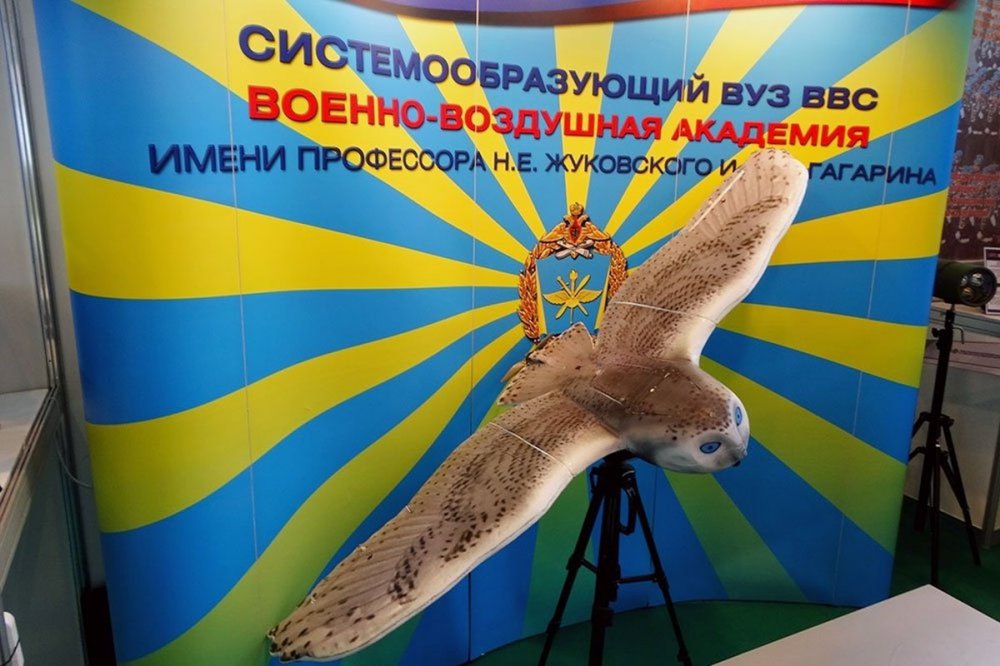This owl-shaped drone comes from the Zhukovsky/Gagarin Air Force Academy. It’s not the first such bird-imitating drone from the Academy, which also made a falcon-shaped drone. For greater realism, that falcon drone can play prerecorded falcon sounds. (Beyond Russia, there’s a rich field of drones that look like birds, used for everything from advertising sunscreen to scaring birds away from airports and even spy drones for other militaries.)
“What’s interesting is that Russian designers are thinking creatively about UAV applications,” says Samuel Bendett, a research analyst at the Center for Naval Analyses. “Biomimicry allows UAVs to operate in areas where a ‘regular’-looking UAV would have been sighted and eliminated.”
As advertised, this Russian owl-drone uses an electric motor for quiet flight and carries a laser targeter to illuminate targets. The intended function of the owl drone is to track tanks, vehicles and other heavy equipment, spotting and then directing fire under the cover of its animal shape. Designed for use in the northern reaches of Russia, the drone is made to resemble a Snowy Owl, or possibly a Ural Owl, though neither has a face quite as cartoonish as this robot.
“In Russia’s part of Eurasia where hunting birds like owls, falcons and eagles are very common, a UAV that looks like a bird can become an invaluable ISR asset — it can basically ‘hide’ in plain sight,” says Bendett. “It’s logical that more designs like that may follow, until Russian MOD settles on those it thinks are best suited for various military missions.”
It’s also worth noting that the materials for a pretty-good bird-like airframe are relatively cheap. Drones that propel themselves through the air by flapping are doable, but tricky and complicated. Making a bird-shaped body out of foam and then putting sensors and an electrical engine inside it is much easier, and with birds that glide long distances, likely effective enough at the range where the drone intends to operate.
While the advent of small drones means that radar systems and other sensors are better at distinguishing drones from birds, most of those counter systems have short detection ranges. If the owl drone’s sensors can operate beyond that, the only easy way to detect it will be an eagle-eyed observer on the ground. Or an actual eagle.
Photo: Alexey Moiseev, Rossiyskaya Gazeta
Source: C4ISRNET

